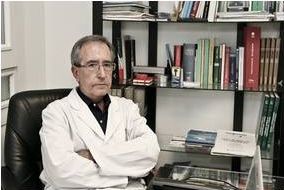Arthrosis is a widespread chronic disease that affects about 7 million people in Spain. Despite its prevalence, it is still a pathology surrounded by misunderstandings and myths. Today, Dr. Marzo Gracia, rheumatologist at Paracelso Sagasta, dispels six of the most common myths about this condition.
Arthrosis is a disease of the entire joint, which can end up collapsing by causing wear and tear of the articular cartilage, a kind of cushion that covers the ends of the bones. When the bone is left without the protective effect of the cartilage, friction between the bones occurs, causing pain, stiffness and deformity of the joint. Although it is most common in load-bearing joints such as the hip and knees, it can affect any joint, including hands, feet, wrists, shoulders, elbows and spine (cervical dorsal and/or lumbar).
Myth 1: Arthrosis and arthritis are the same.
Although they sound similar, arthrosis and arthritis are different conditions. The former causes wear and tear of the cartilage in a joint, which causes stiffness and, in some cases, inflammation. As the cartilage deteriorates, the bones begin to rub against each other, decreasing mobility. On the other hand, arthritis affects the synovial membrane, which surrounds the joint and contains synovial fluid. When this membrane becomes inflamed, the joint becomes painful, swollen and difficult to move.
Myth 2: Arthrosis is hereditary
Arthrosis itself is not a hereditary pathology. However, there are genetic factors that may increase the predisposition to develop it more quickly, such as the shape and stability of the joints.
Myth 3: Rest is the best source of relief
While it is recommended that arthrosis patients take a few hours of rest a day to relieve pain, it should not be considered the main method of relief. In fact, lack of physical activity and a sedentary lifestyle can aggravate symptoms and hinder the effectiveness of treatment.
Myth 4: Arthrosis is only a disease of old age
It is true that the risk of developing arthrosis increases with age, especially after the age of 40. However, it can also affect younger people due to factors such as overweight, genetics and the practice of high-impact sports.
Myth 5: I can’t do sports if I have arthrosis
Stopping exercise is not recommended for people with arthrosis. Both complete rest and excessive activity can worsen the condition by reducing strength and mobility. It is essential to consult a doctor to find a suitable exercise routine, including low-impact activities that do not put direct pressure on the joints, such as walking, swimming or cycling.
Myth 6: There are no effective treatments for arthrosis
Although there is still no definitive cure for arthrosis, there are several treatments that can alleviate symptoms and improve the quality of life of those who suffer from it. Lifestyle modification, physical therapy, some medications or the consumption of certain foods are some of the options that can slow the progression of the disease. With the right approach to pain management and functionality, people with arthrosis can enjoy a full and active life.
At the Paracelso Sagasta Rheumatology Unit, we approach arthrosis and other rheumatic pathologies from a comprehensive point of view. Our specialists will offer you personalized attention in order to find the most appropriate treatment for your case and delay or slow down the degeneration of your joints. Make an appointment now with one of our professionals.

